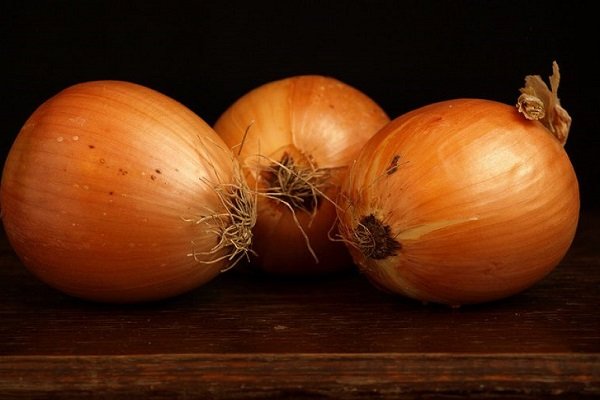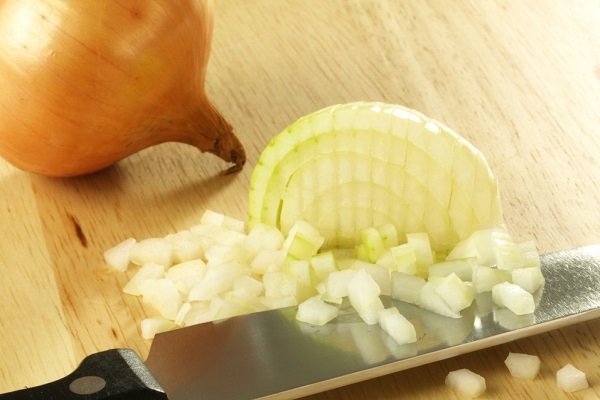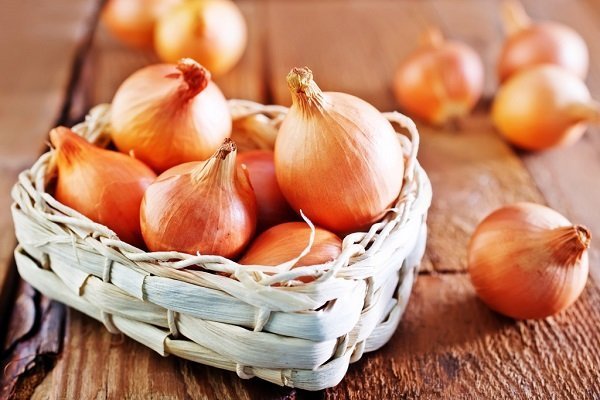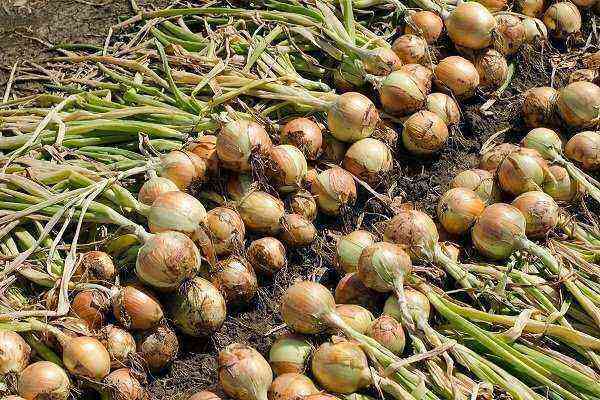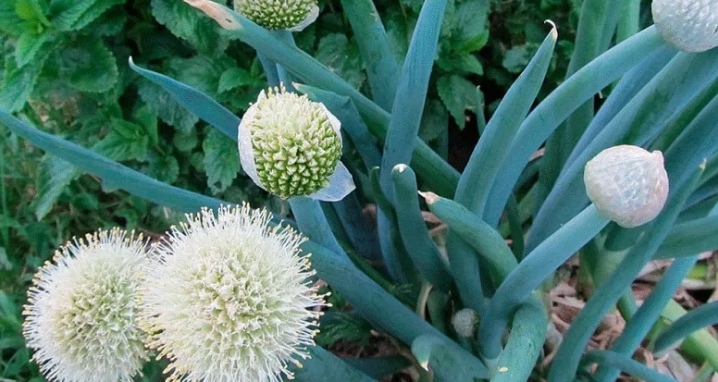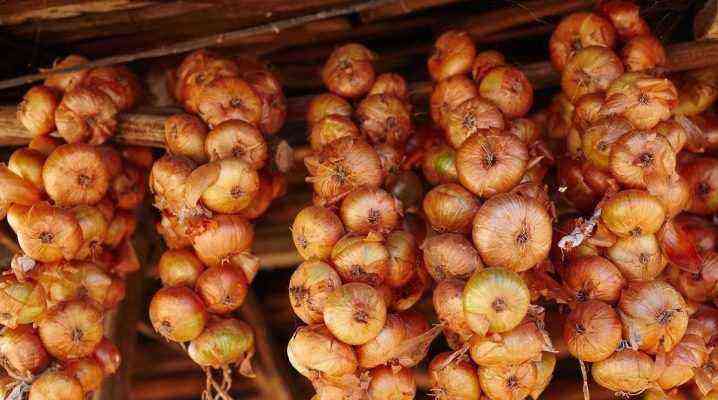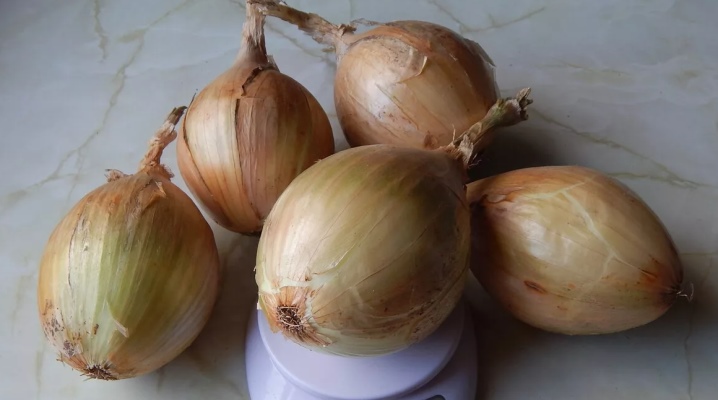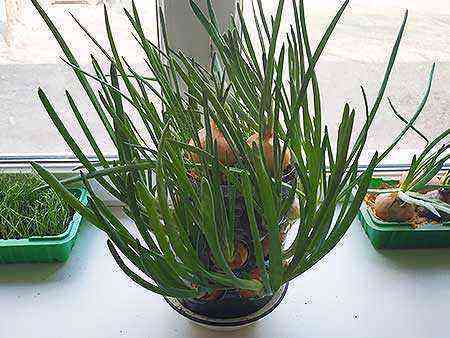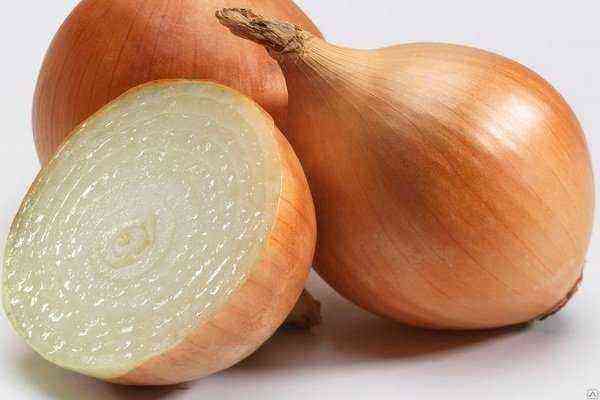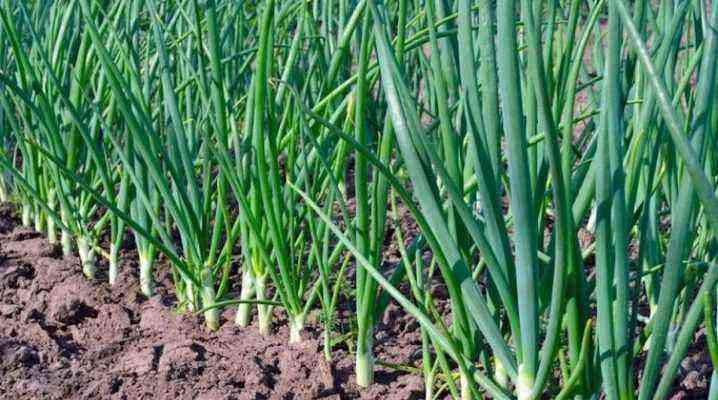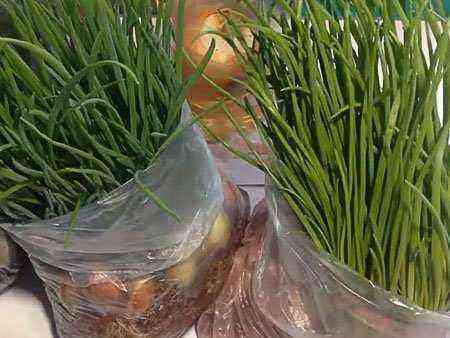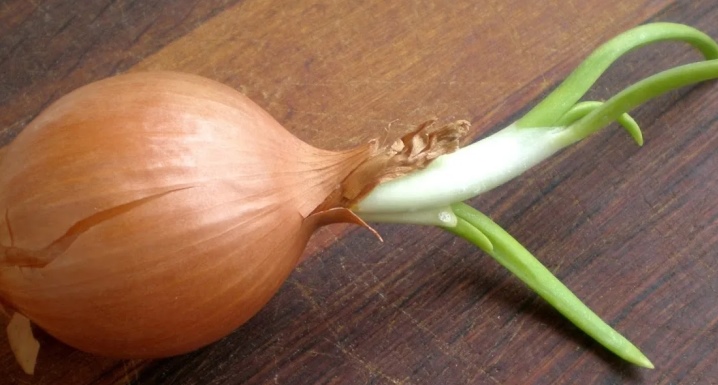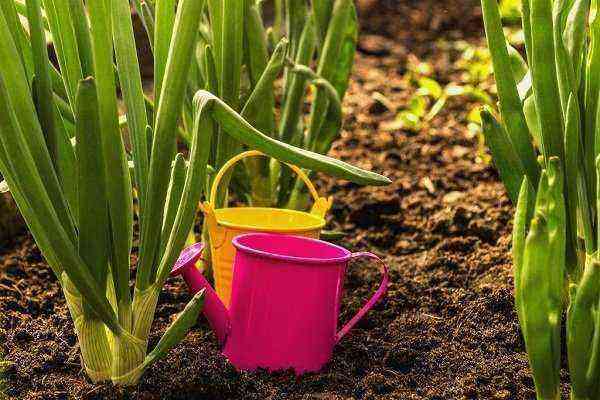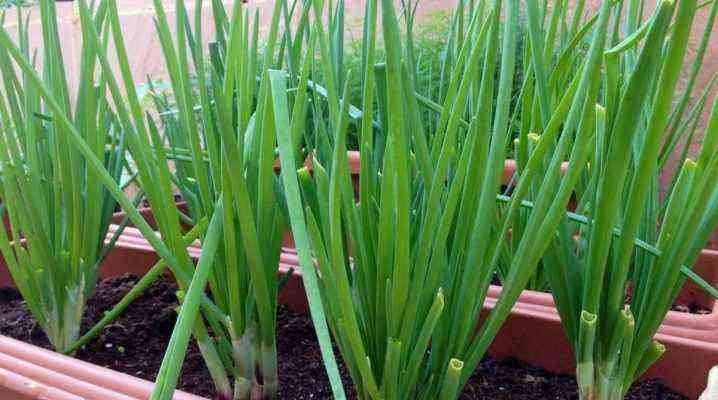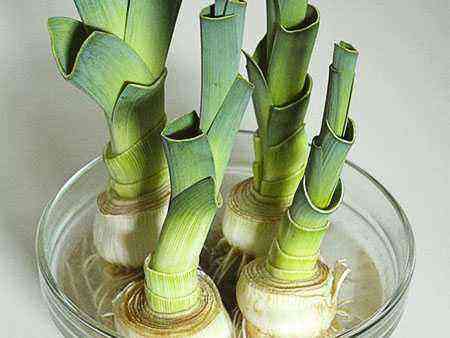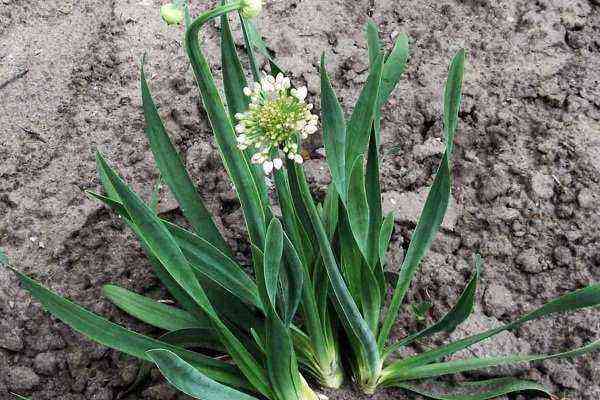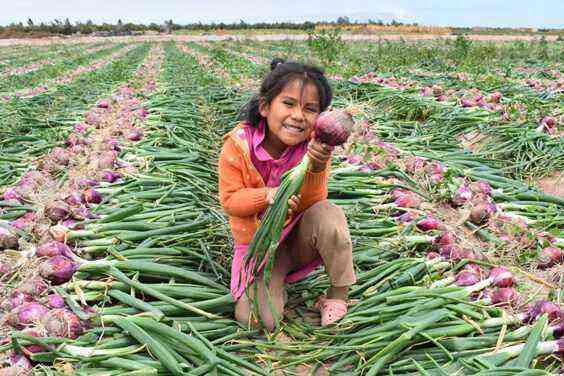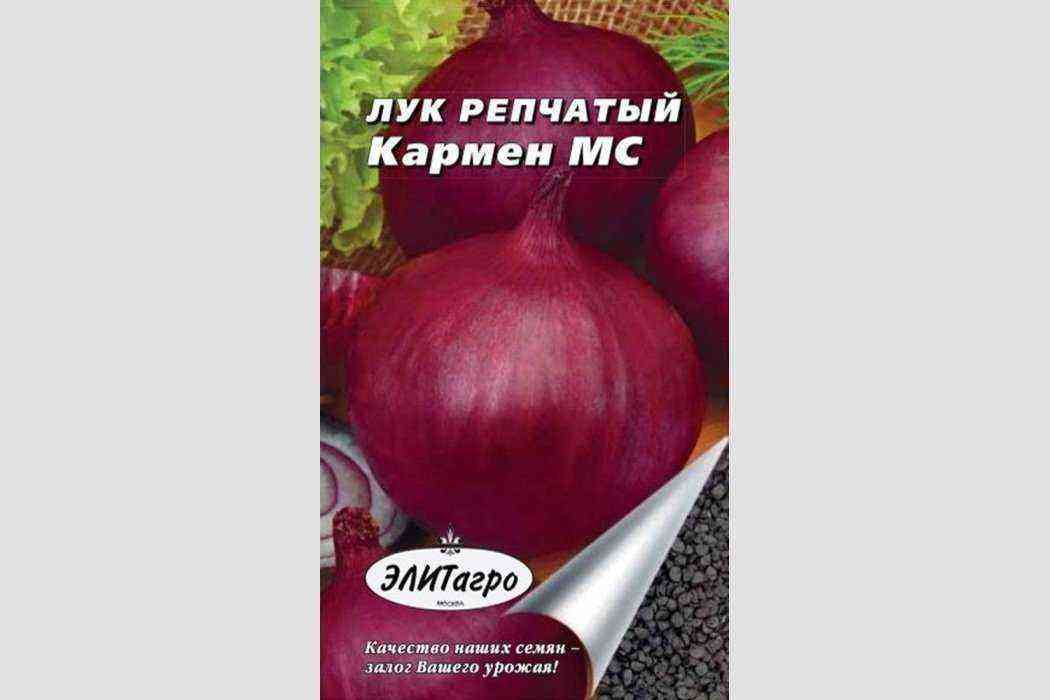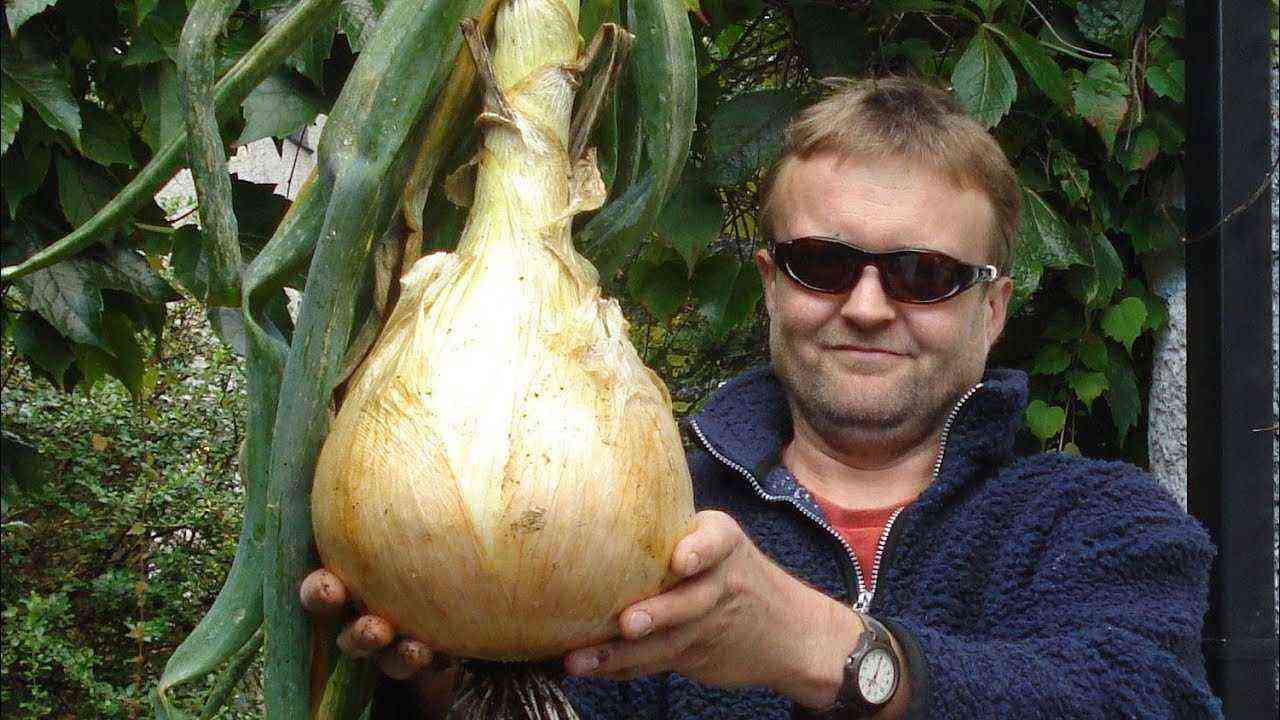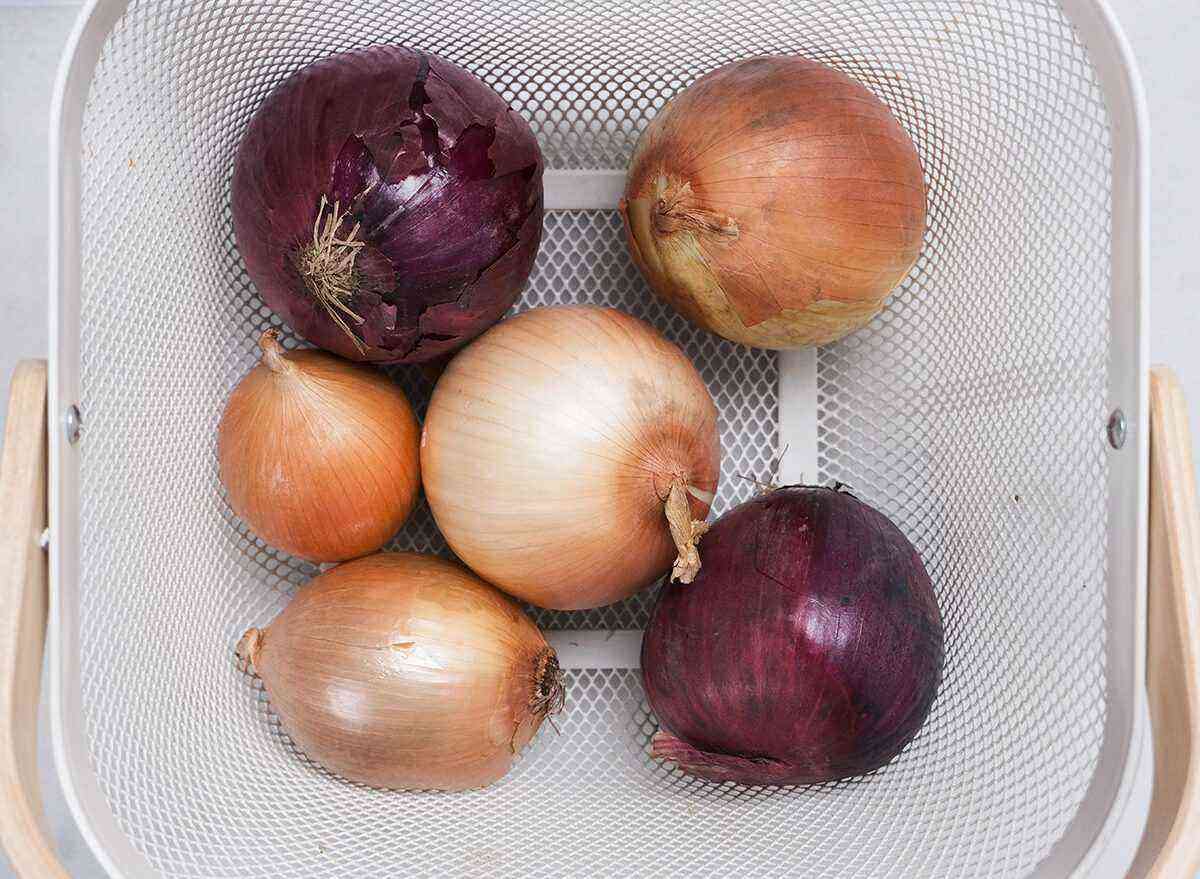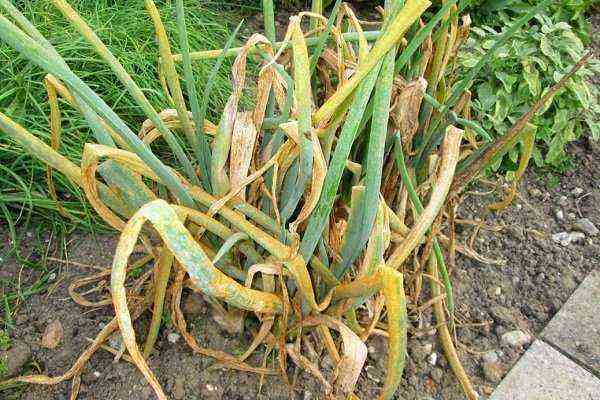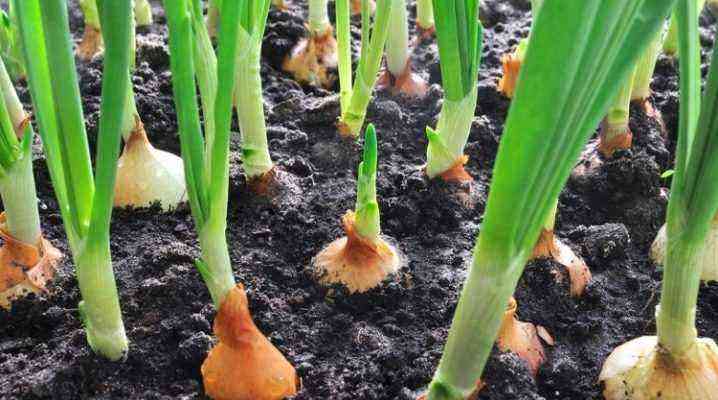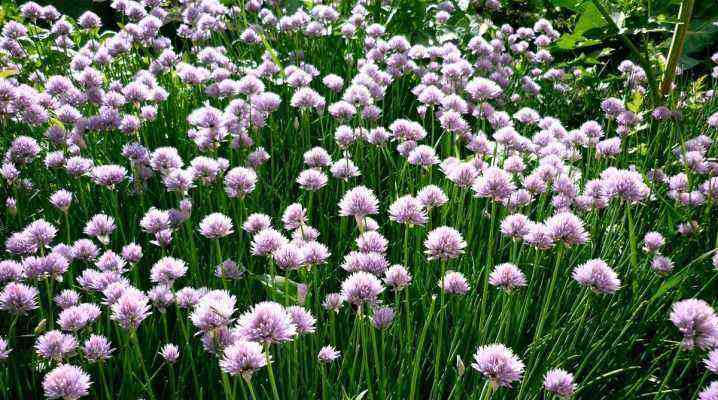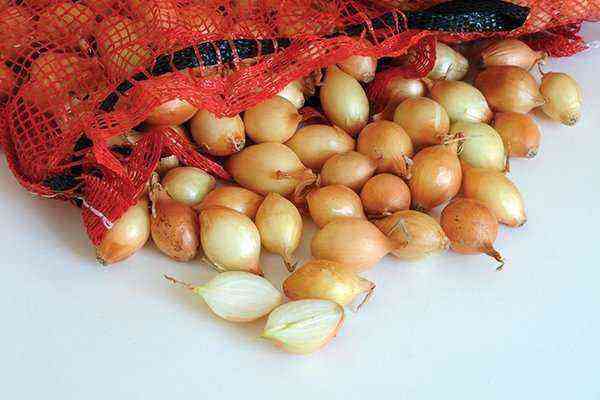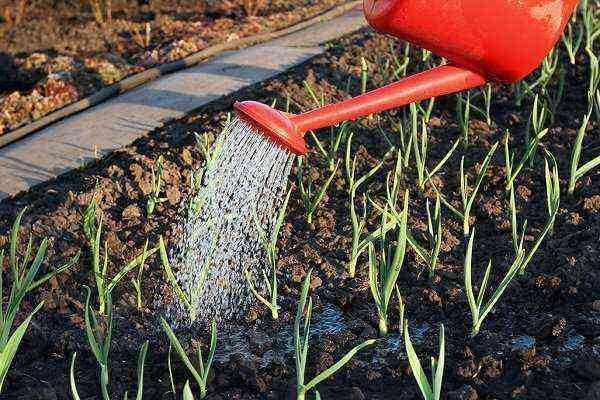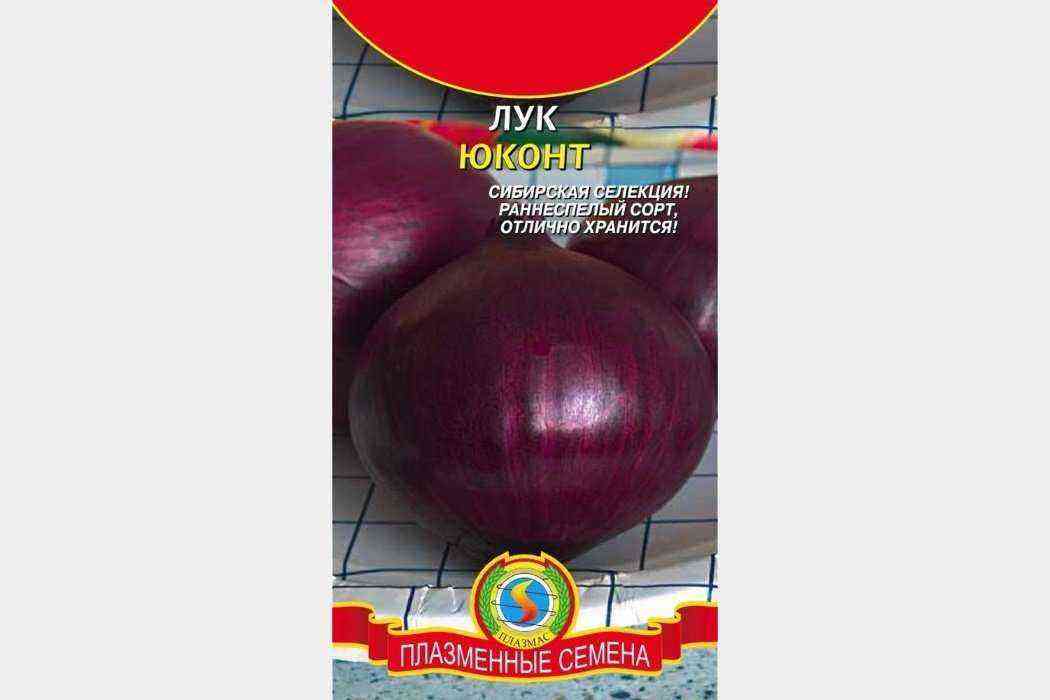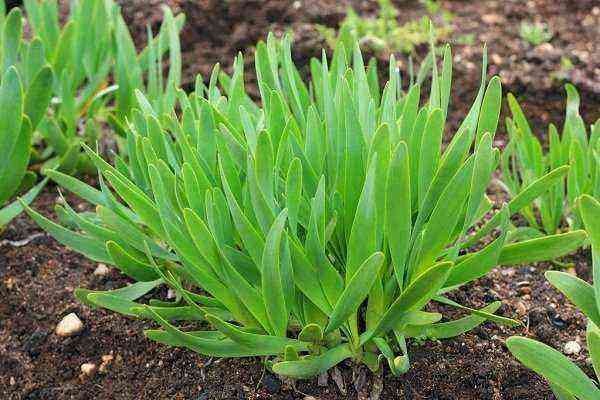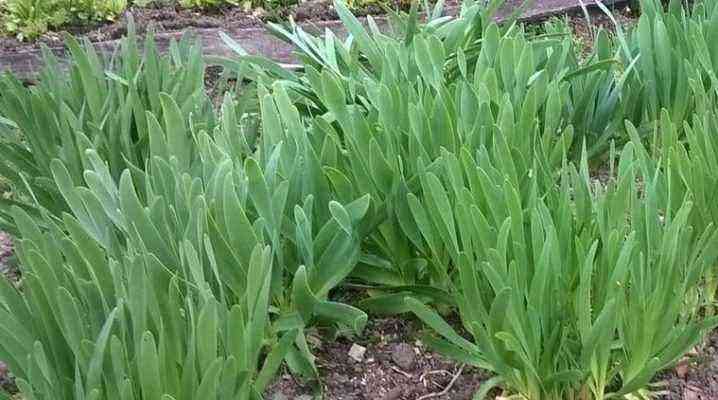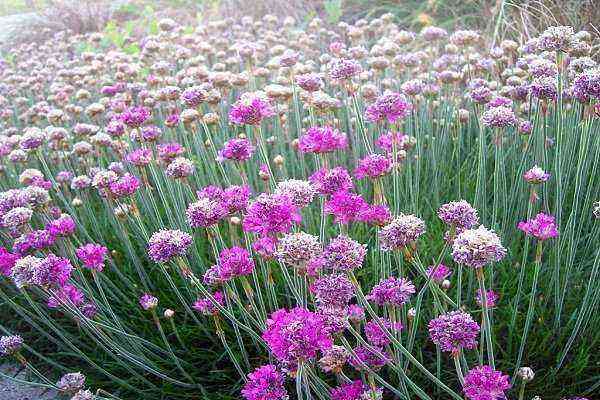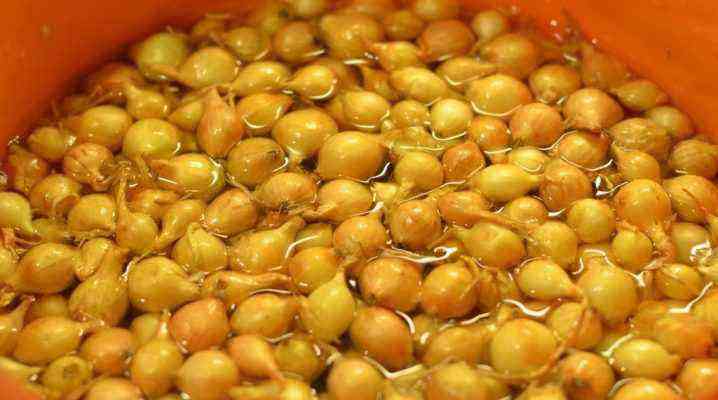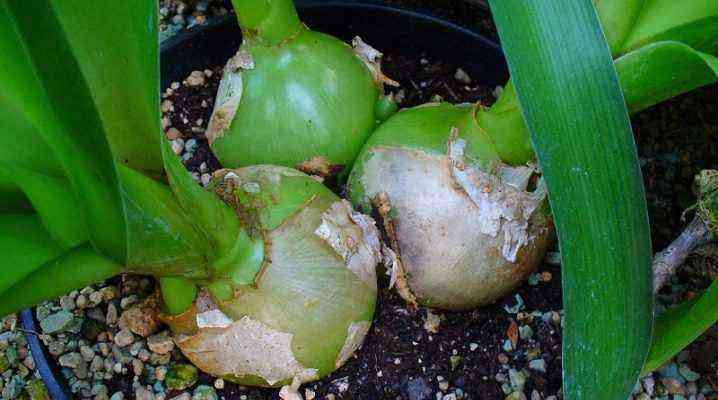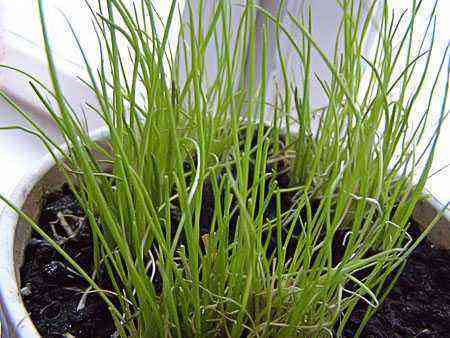Shetana onion is popular among gardeners, as it has a high yield, and growing it is quite simple. This onion is rich in useful properties, not too whimsical to care for, so even a beginner can grow a crop in his garden.
Description of Shetana’s Bow
The variety was bred in the Czech Republic specifically for outdoor cultivation. Onions perfectly tolerate frosts, ripen quickly.
Appearance
Visually, Shetana onions are easy to distinguish from other varieties of onion vegetables. It has a number of distinctive characteristics:
- The bulb has a round shape.
- The husk is colored in a characteristic yellow color. Inside the color of the husk is whitish.
- Leaves are quite long. They have a greenish color with the addition of a bluish tint.
- The thickness of the neck is medium.
- Shetana onion flesh is white and juicy.
- The approximate weight of one bulb is 45 g. If the vegetable is grown from sets, then the bulb weighs more – from 65 to 85 g.
Palatability
Shetana onion is chosen by many gardeners due to its taste. The vegetable is characterized by a bright peninsular taste, making it a versatile plant product. Therefore, this onion is widely used in cooking for the preparation of first and second courses, cold appetizers, salads. It is used for marinating, baking and preserving.
Ripening time and yield
Shetana onion belongs to medium-early varieties, therefore, approximately 2,5-3 months after planting, the first crop can be harvested. Such a ripening period is inherent in seed sowing. If the planting takes place in sevkom, that is, small one-year-old onions are planted in the ground, the crop sprouts much faster – after about 1-2,5 months.
The yield directly depends on the region where the variety is grown. For example, if the central part of Russia became the place for growing onions, then about 1-5 kg of product are harvested from 000 hectare. In the southern regions, much more yield is obtained from 5 hectare – from 800 to 1 kg.
Composition and Properties
The onion vegetable has a composition rich in useful substances and trace elements. It includes the following list of components:
- Saponins. These are complex compounds from vegetable glycosides.
- Onions contain both glucose and fructose.
- Pectic substances.
- Iron.
- Potassium.
- Fluorine.
- Vitamins in the form of ascorbic acid and tocopherol.
- Essential oils. They give the vegetable its characteristic smell.
Shetana onion helps to treat anemia and also contributes to its prevention. This property has a large amount of iron.
Potassium improves heart function, strengthens the heart muscle, and vitamins restore immunity. Among other things, onions are a natural antiseptic. It is used during colds.
Advantages and disadvantages
The variety is chosen by many summer residents because of the presence of positive aspects, which include the following:
- a vegetable can be planted both with seeds and sevkom;
- early and high harvest;
- onions are resistant to frost;
- It does not require special care;
- it is stored for a long time, retains its presentation and all useful properties even after several months of storage;
- can be grown for sale, as it withstands long-distance transportation well.
Shetan’s onion has only one minus – its main enemy is downy mildew.
Preparing for planting
To harvest a healthy and rich harvest of Shetana onions, careful preparation is required before planting.
Soil preparation
Prepare the soil on open ground in the fall. It is better to choose a place for a garden bed on the sunny side. It should not be flooded with groundwater, otherwise the entire crop may die.
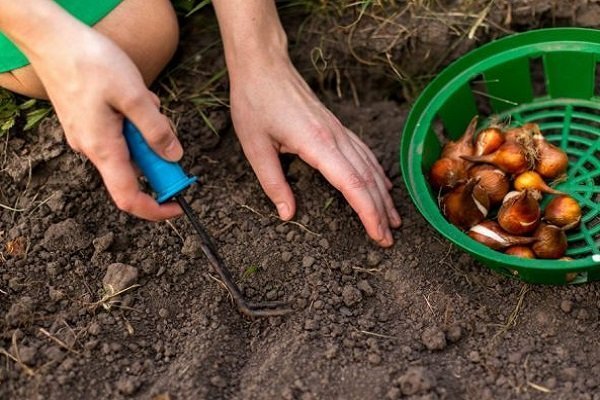
Planting Shetana onions is required in places where nightshade crops grew. An excellent bed is one where potatoes, cucumbers, greens, radishes and tomatoes, as well as early varieties of cabbage, used to grow. It is forbidden to plant onions in the place where garlic, carrots, radishes and other varieties of onions grew.
Remember that the variety prefers to grow on loose, fertile soil with neutral acidity. If the soil is acidic, liming. This requires dolomite flour or ordinary ash.
To determine the acidity of the soil yourself, take some earth, dissolve it in a glass of water and dip in litmus paper. If it turns red, then the earth is acidified, and if it turns green, the acidity of the soil is normal.
Before digging the ground, do the following:
- Pour compost or humus into the soil (using fresh manure is unacceptable).
- Next, mineral fertilizers are added, which must contain three components: sulfate, potassium and complexes, for example, nitrophoska.
Plus, to improve the quality of the soil, sand, soddy soil, and peat are added.
Before planting seeds for future seedlings, also prepare the soil in advance:
- Take the earth and disinfect with potassium permanganate or a fungicide solution. Solutions are used to irrigate the soil.
- Next, mix the earth with sand, peat and humus.
If desired, the soil can be pre-steamed before the seeding procedure.
Selection and preparation of seed material
It is best to purchase Shetan onion seeds and sets in specialized stores, since it is in such establishments that high-quality seed is sold. But still, before buying, try to inspect the seeds and seedlings as carefully as possible.
To choose a quality onion set, pay attention to the following:
- The seedlings should have all the characteristic features of the onion, that is, the yellowish color of the husk and white juicy pulp.
- Before you start buying, smell the onions. They should have a pronounced onion smell. If they smell like mold, then such material is not suitable for planting, and it will not work to grow a crop.
- Pick the bulbs with your fingers. They should make a quiet rustling sound. If it is absent, then the seedlings are wet, and this should not be.
- Refrain from buying sevka after winter. During frosts, seedlings freeze, and after defrosting, the bulbs will be rotten. Such planting material will not bring any result.
- If planting sevka is not planned in the near future, then you should not purchase bulbs with roots and leaves that have already appeared.
- Seedlings should be clean, without spots, scratches, whitish bloom.
- Ideal for planting bulbs are those that have a diameter of about 1-2 cm.
If, after purchasing the planting material, there is a lot of time left before disembarkation, it must be dried and placed in bags made of cloth or paper and removed to a place where the air temperature does not rise above + 10-15˚С. Humidity should be between 70 and 75%. If the bulbs have already sprouted, put them in the refrigerator, preferably on the bottom shelf or in the vegetable compartment.
Before planting, the seedlings must be prepared. They start doing this two weeks before disembarkation:
- Step one. Dry the seedlings and transfer to a warm place. The temperature should be around +20˚С.
- Step Two. 8 hours before planting, seedlings should be kept at a temperature of +30 to +35˚С. Such a temperature regime can be arranged by installing a heater next to the sevka.
When choosing seeds, always pay attention to the expiration date of the planting material. Don’t buy one that expires on or before planting out. Remember that Shetana onion seeds have a total shelf life of 3-4 years. If it is possible to count the seeds, then know that there are about 1-200 pieces per 250 g.
Seeds are also prepared before planting. For this, a number of the following manipulations are performed:
- Step one. Inspect the material and choose the strongest, intact, light-colored seeds.
- Step Two. Disinfect the seeds with a weak solution of potassium permanganate. Then they are placed in a liquid for no more than twenty minutes.
- Step three. Transfer the onion seeds to the growth stimulator. For this, the Zircon tool is used.
Technologies and planting dates
Shetana’s bow is suitable for planting both in spring and before winter. Each season has its own technologies. Planting dates also affect a high yield, they must also be observed.

Podzimnaya landing
Before winter, onion vegetables are planted depending on the region. But the main condition is to have time to plant sevok 14 days before the onset of frost.
Pre-prepared bulbs are immersed in the ground to a depth of 4 cm. The diameter of the bulb should not exceed 1 cm.
The soil should be ready for planting two weeks before the planting procedure.
After planting the seedlings has come to an end, the soil is mulched – covered with any organic material in the form of sawdust, wood shavings, dry leaves. Or inorganic – small pebbles, gravel.
Planting sevka in the spring
The spring planting of Shetana’s onion sets is slightly different from the winter one. A vegetable is planted in May, when the soil warms up enough. Shortly before this, the soil and seedlings are prepared. Two hours before planting, future beds are watered abundantly.
For spring planting, bulbs with a diameter of 2 cm are required. They are immersed in holes to a depth of two centimeters. Water again after the hole. The soil is mulched.
During spring and winter planting, make sure that about 5-7 cm remain between the holes, and the distance between rows is from 15 to 20 cm. This is how the vegetable receives the necessary heat and the amount of sunlight required for healthy growth.
Care instructions
To get a large and healthy onion crop, you need to carefully care for the vegetable.
Watering
The newly planted sevok is watered in small portions of water as the soil dries out. As soon as hot weather sets in, the onions are irrigated 2 times a week. An already formed turnip requires one watering per week.
Onions are irrigated in the evening or in the morning when the sun is not so active. Otherwise, the plant will get severe burns. If it rains, then you can refuse to water the beds. Finish irrigating seedlings a couple of weeks before harvest.
Loosening and weeding
As soon as the first shoots appeared on the beds, it is required to regularly loosen and weed the ground. Carefully weed the area between the holes, trying not to hurt the seedlings.
If weeds have appeared between the beds and around the holes, remove it manually. You need to loosen the beds after watering or rain. If this sequence is followed, weeds will not grow and harm the future crop.
Application of fertilizers
During the ripening period of the crop, it is necessary to fertilize the soil. There should be three top dressings during the growing season:
- First feeding. It is carried out after the first shoots, 14 days after planting. Nitrogen fertilizers are applied to the soil.
- Second feeding occurs 14 days after the first. You will need organic fertilizer in the form of bird droppings. You can take a solution of mullein (cow dung).
- Third feeding. It is done already at the time of the formation of the bulb. Take a mineral mixture that contains potassium and phosphorus in large proportions.
Fighting diseases and pests
As already mentioned, Shetana onions are not resistant to downy mildew. The disease affects the vegetable if there is a sharp change in temperature or the humidity in the garden rises.
Among other things, the onion is exposed to disease and the appearance of pests due to a violation of the technologies for preparing planting material and planting in the ground.
If signs of the disease were found, then do not use fungicidal agents for spraying. After processing with such substances, onions are dangerous to eat. Use traditional methods. Whey is effective in a ratio of 1:10. Serum bacteria kill any fungal diseases on plants and are absolutely safe for humans.
Vegetables can also be damaged by onion flies. It is not the adults that are dangerous, but their larvae. Once in the ground, they eat the top of the bow. To prevent such a nuisance, spray the beds with products that have a pungent odor. For such purposes, a decoction of mint, valerian, coniferous infusion is suitable.
Harvesting and storage of crops
Sloping onion leaves are the main sign that it’s time to go out into the garden and harvest. But do not put off this lesson too much, otherwise the bulbs will take root, and the vegetable will be impossible to save.
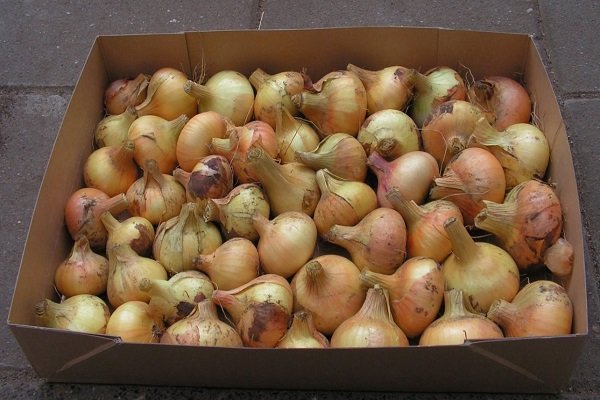
Shetan’s bow keeps well. But this should be facilitated and follow a number of rules:
- Once the crop has been harvested, dry it in place under the open sun. You can spread the onions right on the beds, spreading newspapers.
- Next, sort through the onion heads, discarding those with a flaw.
- Trim the leaves, leaving about 10 cm.
- Dry the onion vegetable for several more days at a temperature of +25 to +10˚С.
- After that, remove the crop to a permanent storage place, transferring it to boxes. Or hang a bow in nets. For this, a basement, cellar or balcony in an apartment is suitable.
In the room where the onion crop is stored, it is required to maintain a constant temperature from 0 to + 5 ° C. You can store at room temperature, but make sure that it does not have sharp fluctuations. The onion room should be regularly ventilated.
Useful Tips
Shetana onions are easy to grow and care for. But, despite this, pay attention to tips that help prevent diseases, achieve a rich harvest and ideal taste.
The main problem when growing onions is yellowness on the leaves. If it appeared in July, you should not worry – this is a sign of early maturation. If the yellow color hit the leaves before this month, this is no longer normal. This signal indicates several problems:
- Parasites. To protect the onion from parasites, regularly loosen and weed the ground in the beds. Carrots help to forget about pests once and for all. Plant it next to Shetan’s onion and its scent will repel any vermin. Helps with solving the problem and wood ash. Apply it to the soil in addition to the main fertilizers.
- Insufficient amount of nitrogen in the soil. To do this, apply fertilizers containing this component. In order for nitrogen to be absorbed into the soil, regular watering is needed. But if the weather is rainy, nitrogen can sink very deep into the ground, and the onion root system will not receive the component it needs.
- Little moisture. If the onion leaves turn yellow, water it a little more often than recommended. Do not let the soil dry out, especially in hot weather.
Also take note of the following helpful tips:
- A mixture made from table salt (half a glass is required), 1 ampoule of ammonia and 3 handfuls of ash helps to eliminate yellow leaves. All components are poured into 10 liters of water and thoroughly mixed. Water once every 1 days until the yellow color disappears completely.
- You can prevent the appearance of pests with this remedy: iodine – 0,5 tablespoons, soda – 0,5 kg, manganese – 2 packs. All ingredients are filled with water (5 liters are needed). Next, dilute the resulting mixture with liquid in a ratio of 1:10 and pour over the onion.
- You can scare away parasites with sand and mothballs. Scatter a mixture of them between the beds.
Often Shetan’s bow starts to taste bitter. This is due to insufficient watering. Do not forget to irrigate the next crop, otherwise the dry matter content in the soil increases, and this causes an unpleasant taste. Also, for taste, fertilizers containing phosphorus are needed.
Testimonials from truck drivers
Vladimir, 67 years old. I like the Shetana onion variety for its taste properties and ease of planting and care. I usually plant this vegetable in sets. I buy it from the manufacturer, sometimes in specialized vegetable shops. The fact that the variety is frost-resistant is a huge plus. After all, sometimes you want to treat yourself to a dish from Shetana in the spring.
Maria, 48 years old. Once I bought Shetan onion sets in the store, planted it and was surprised how quickly the first crop appeared. Now I plant a vegetable every year. The onion is excellent, with a bright taste. Taking care of him is a real pleasure.
Gregory, 59 years old. For me, the Shetana variety is loved because it is resistant to diseases, and it is easy to care for it. I always plant this onion in my dacha, and I will not exchange it for any other variety.
Eugene, 43 years old. I grow Shetana onions in my garden, as the variety is perfectly stored and does not lose its properties and qualities. For me, this is important, as it promotes trade. Also an important aspect for choosing this variety is its ability to tolerate frost. Already in the spring, you can harvest and send it for sale. There is nothing to say about the taste – it is magnificent and suitable for many culinary dishes.
Shetana onion is a wonderful variety of onions, which is popular among gardeners. Growing this vegetable is quite simple both in spring and in winter. To do this, you just need to properly prepare the seed and carry out further care. And useful tips from experts will help prevent diseases and even improve the taste of onions.
